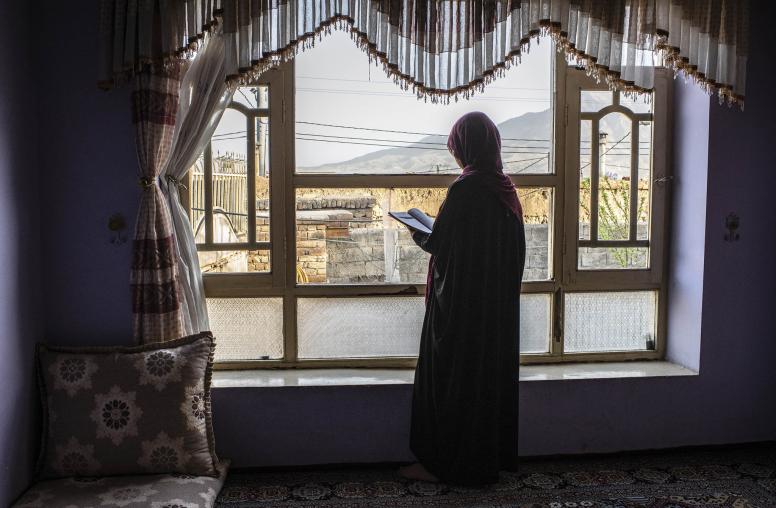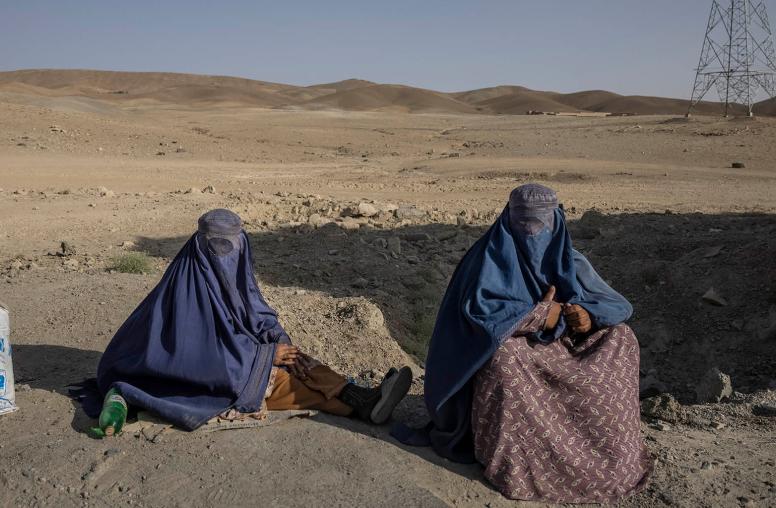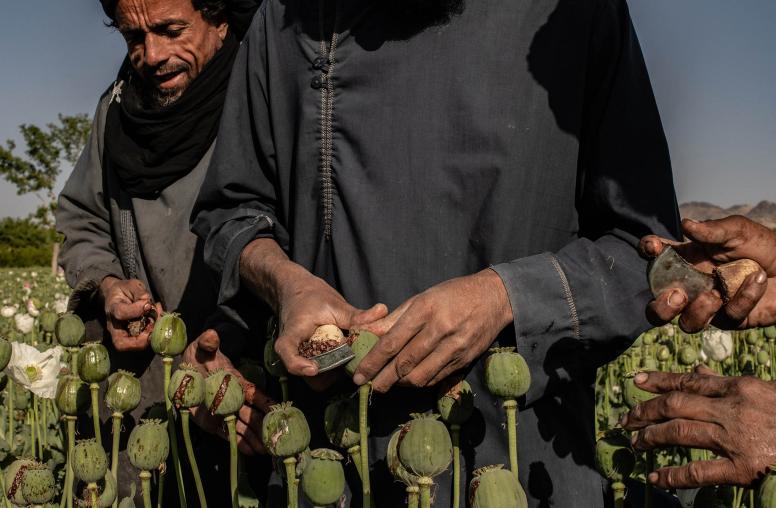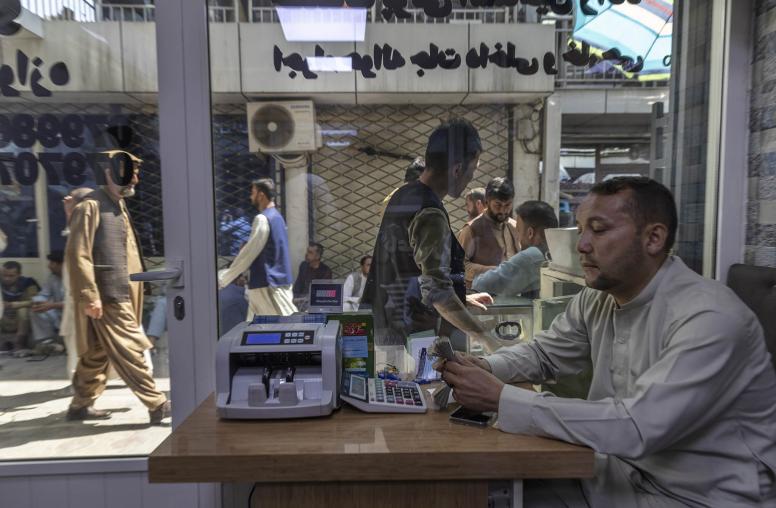Taliban Are Collecting Revenue — But How Are They Spending It?
U.S. and other donors must engage Taliban on their finances so that aid doesn’t pay for costs already covered by Afghanistan’s government budget.
Although economic and humanitarian conditions in Afghanistan continue to deteriorate, the Taliban have taken some positive steps toward financial stability by publishing a fiscally responsible three-month budget and raising considerable amounts of domestic revenue — especially through customs duties, which have risen with a crackdown on corruption.

However, this budget raises several questions: Is the Taliban administration actually spending this revenue on their declared budget priorities? And should aid pay for costs — most notably salaries for teachers and other civil servants — that the Taliban regime now has the resources to cover and are included in the new budget? The international community urgently needs to get a better idea of how much the Taliban government is collecting and where budget resources are being spent, so as to ensure that the limited aid funds for delivering essential services are well-spent.
Some Positive Developments
In addition to the three-month budget (which will run through March 21) and information on revenue collections for the past few months, senior Taliban officials recently held a one-day economic meeting with the U.N. and other countries. Taken together, these developments indicate that the Taliban are paying more attention to government finances and economic governance than in the early months of their rule — and that the Afghan government wants to demonstrate fiscal responsibility and its ability to govern to the outside world. More specifically:
- According to the World Bank and other sources, the Afghan government collected some $400 million in total revenue from September 21-December 21, 2021. This is in addition to revenues the Taliban as a movement must have continued to collect separately, including through informal and traditional levies on agriculture, transport, mining, etc.
- Though less than half the revenue compared to the same quarter of previous years (which tended to be in the $900-1,100 million range), this is nevertheless a solid achievement given the implosion of the economy and the disruptions caused by the sudden regime change, which devastated revenue in July-August.
- Customs receipts held up better than expected despite the sharp decline in imports and economic activity — recovering to similar daily collections as 2020. This suggests substantial improvements at the borders, consistent with reports from Afghan traders that corruption has been greatly reduced.
- Looking ahead, the government can expect to mobilize at least $1.2-1.5 billion per year in total revenue (compared to $2 billion-plus annually in previous years).
- The government’s new three-month budget is not a full-year budget since it is intended to cover the gap between the existing fiscal year and the solar-year-based fiscal calendar that the Taliban have shifted to and that previous Afghan governments had used up to 2011.
- The Taliban budget is nearly balanced — and realistically projects no aid flows directly into the budget. Though the revenue projections may be somewhat optimistic, in general the budget seems relatively prudent, and compares well in this regard against past Afghan budgets.
The Taliban Budget’s Unanswered Questions
Based on the new budget and recent trends, the Taliban are collecting sufficient revenues to pay for most, if not all, civilian operating costs. This includes the salaries of teachers, the minority of health workers who are civil servants and other civilian government employees. It should be noted that the Taliban reduced government employees’ salary scales — especially some special scales at the upper end where they were felt salaries to be too high — thereby economizing on the wage bill. Moreover, the dissipation of the Islamic Republic’s army and police means there is no need to pay them, and the budget does not show large payments for Taliban fighters, which in the past were funded by the Taliban movement’s revenues and are currently not incorporated in the budget.
However, government employees appear to have been paid their salaries only sporadically and irregularly, though some salary payments reportedly have been made in recent months. Given the apparent availability of revenues for this purpose, why have civil service salaries not been fully paid? Is lack of cash liquidity making it harder to pay out civil servants’ salaries? The government wage bill was paid into employees’ bank accounts in the past, and there is no reason this could not continue — though there are limits on how much the account holders could withdraw, potentially creating problems for them that would need to be addressed by easing the cash liquidity crisis.
And with a significant portion of revenues not being used for civil servants’ salaries, what is happening with the money? Is it being used for other purposes contrary to what is in the Taliban government’s stated budget? Or is the money accumulating in the Ministry of Finance’s (MoF) account with the central bank, Da Afghanistan Bank (DAB)?
Amid the massive economic contraction Afghanistan is suffering from, it makes no sense for the government to be sucking money out of the economy through taxation and not then returning it into the economy by responsible spending, especially on government employees’ salaries.
Urgent Need for Engagement and Transparency
Overall, while the new budget is welcome and has some important strengths, the available information also gives rise to serious issues that urgently need to be assessed.
First, though there is no particular reason to doubt the accuracy of the revenue collection figures, they do need to be made publicly available for both transparency and monitoring. And as in the past, outside analysis of non-tax revenues is needed to ascertain whether they are being padded by one-off transfers to the MoF from state-owned enterprises and other government agencies.
A second issue is the consolidation of revenues associated with the Taliban movement into the government budget. This appears to have already been accomplished in the case of customs, with the ending of duplicate Taliban “customs” fees that had been collected by them pre-August. But this needs to happen for other Taliban levies as well, some of which don’t duplicate pre-existing government taxes and therefore — if kept in place — would need to be brought into the budget framework.
Third, the three-month budget does provide specifics on planned expenditures, but there is no information there or from other sources about actual budgetary spending since the Taliban took over. If much of the revenue went unspent, that should be reflected in substantially larger balances in MoF’s account at DAB.
More broadly, making Afghan budgetary expenditures accessible for analysis along with revenues and fiscal balances would concretely demonstrate effective governance and macroeconomic management by the Taliban government.
Who Pays the Salaries of the Afghan Civil Service — And Why?
A major issue arising from recent expenditure trends and the Taliban’s budget is over the payment of Afghan service delivery personnel who are civil servants, especially teachers and hospital personnel.
It appears that some donor countries and international agencies may be actively considering paying teachers’ salaries. The U.N.’s recently published 2022 Transitional Framework for Afghanistan, for example, requests $901 million in aid for education (of which $727 million is in the “sustaining essential services” category). This is such a large amount that it must include teachers’ salaries, whereas teachers’ salaries are already covered in the Taliban budget.
Is the Taliban administration asking foreign donors to pay teachers’ salaries, even though it has the resources to do so itself? Or are donors themselves offering to pay these salaries, perhaps with conditions, to incentivize better Taliban education policy? And in either case, why?
If such payments by donors do materialize, they would free up budget resources to be used for any other purpose the Taliban might choose, such as security or justice. At the very least, donors should understand the possible governance implications of paying teachers’ salaries when the Afghan government has already planned to cover them in its budget.
In conclusion, the U.S. government, other donors and especially the World Bank (which could be authorized to take the lead on this) urgently need to analyze data on Afghan government revenues and expenditures and assess the implications for effective deployment of aid, especially when it comes to assistance for public service delivery as opposed to purely humanitarian aid.
The views expressed in this publication are those of the author(s).



